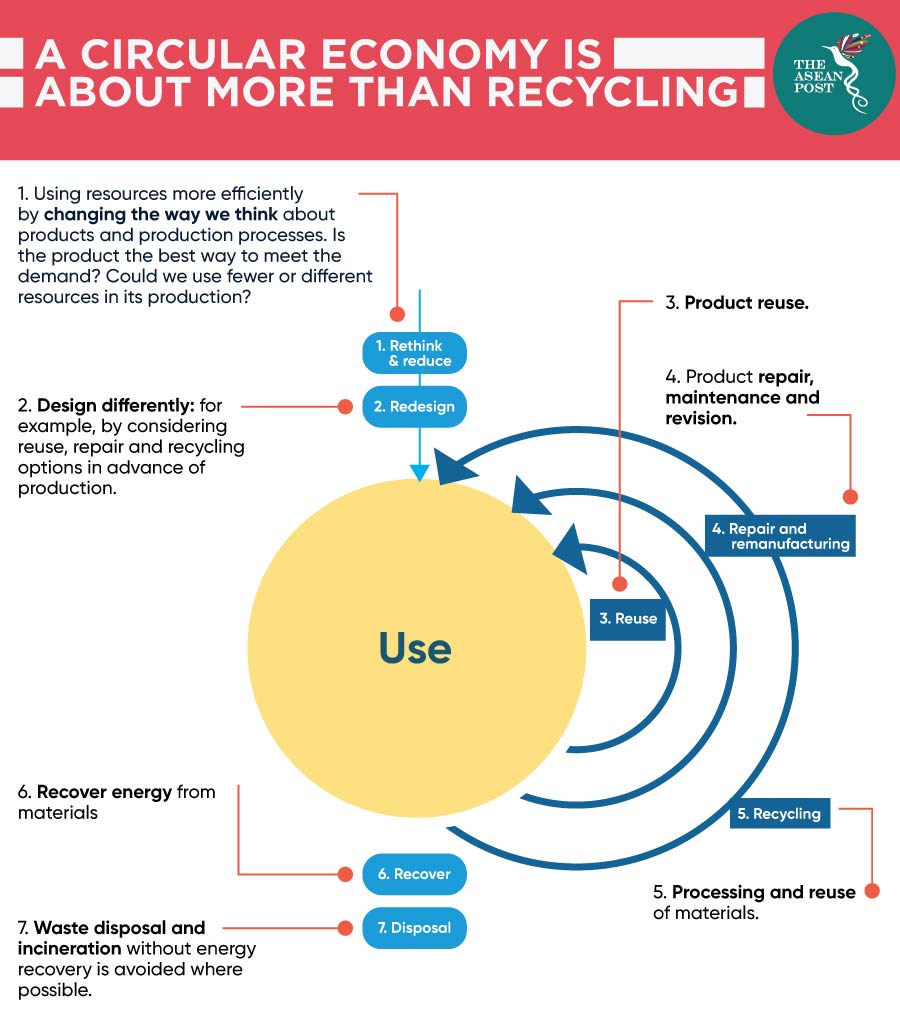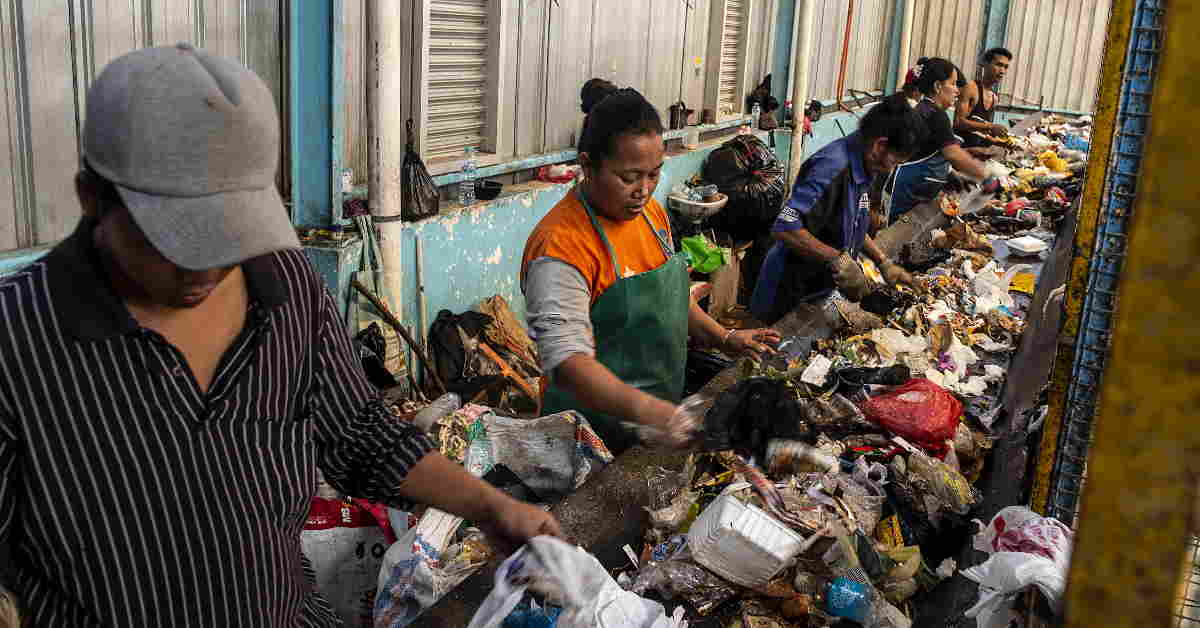As a member of the international community, Indonesia needs to play an active role in ensuring global sustainability. The alarming threat of climate change should be a concern for every country. A comprehensive transformation to a circular economy might be the answer to this dire situation. We believe now is really the time for the Indonesian government to start designing a comprehensive policy reform that changes its economic approach, from linear to circular. It must strategically think about ensuring that this policy is built on a circular economy and work together with related stakeholders for its successful implementation.
The concept of a circular economy focuses on redesigning waste to create other valuable goods to use; replacing the concept of take-make-waste (linear economy), so that the economy eventually produces zero waste. According to management consulting firm McKinsey, the circular economy represents a net materials cost savings opportunity of US$340 to US$380 billion in the European Union’s (EU) automotive and other transport sectors. In the fast-moving consumer goods sector, material savings could represent as much as 20 percent of materials input costs incurred by the consumer goods industry at the global level or equal to approximately US$700 billion or 1.1 percent of global gross domestic product (GDP).
Researchers estimate the benefits of a circular economy in the future will bring potential positive outcomes on the trade balance, greenhouse gas (GHG) emission reductions, efficiency of businesses, effective use of resources, and better security of supply.
To implement a circular economy, collaboration among parties – government, businesses, academics, activists and non-governmental organisations (NGOs), communities, and civil society – is a pivotal ingredient. The government alone will not be able to do this on its own. However, the government needs to play a leadership role in conducting the reform.
Some countries have attempted to shift their economic model to a circular economy. The Pays de la Loire Region in France has initiated a collaboration towards a circular economy by building on concrete and innovative initiatives. In 2018, the Regional Council there launched its first call for projects that support innovative or exemplary activities across the entire loop of the circular economy, which must serve as demonstrators: the transferability of projects is thus an essential factor in obtaining regional aid.
In Asia, Japan has successfully employed a circular economy approach. Japan recycles 98 percent of its metal waste and only relinquished five percent of waste to the ground in 2007. The government of Japan has engaged local businesses to collaborate comprehensively in the measurement and action approach. While people take part in separating recyclables, paying recycling fees directly and holding companies to account when necessary, manufacturers do their part by using more recycled materials and making products that are easier to repair and recycle.

So how about Indonesia? A huge transition can begin with small steps. There are several ways to support collaboration in implementing a circular economy in the country. The first step is by using the cultural approach. The government is now initiating the concept of circular economy with the 5R pillars – reduce, reuse, recycle, recovery, and repair. This is something that is not uncommon for Indonesians. One example of local wisdom Indonesians hold onto is when a same gender younger sibling is born, he or she will most likely reuse clothes and items handed down from an older sibling. Such a culture can help reduce apparel use while parents save money and prevent wastage. Another local practice which Indonesians can preserve is when women go to the market, they usually bring their basket made from rattan or plant roots so that the use of plastic bags can be reduced. Such practices can be repromoted in our daily life and must be added to the school curriculum to increase awareness among the young generation.
The other policy alternative for the government is to change the old paradigm. The circular economy concept encourages changing the paradigm of ownership. For example, owning stuff such as electronic goods always end with creating more waste, but if people lease electronic goods from manufacturers, the waste can be recycled into new goods. In other words, it changes the role of the customer to become a user. We can only imagine the reduced waste from electronic devices in all our houses if they are recycled by manufacturers.
This changing paradigm can also be implemented in the fashion industry. The fast-fashion industry is one of the biggest contributors to waste. In Europe, in countries like Germany, Sweden, and the Netherlands, the emergence of so-called fashion libraries has risen. There, not only can people buy fashion items, but also lease them. The trend of renting fashion items will gradually reduce fashion waste.
As a leading player in this initiative, the government can encourage manufacturers to take action by providing guidance and incentives to those employing circular economy initiatives. The manufacturers need to do more than just carry out corporate social responsibility programs. Recycling waste from their activities needs to be regulated and included in their standard operating procedures. This needs to be done by all industries because embodying a circular economy is not about changing just one product by one manufacturer, but must involve all manufacturers working together to build an infrastructure that forms a circular economy.
Finally, the government should collaborate with NGO communities, and environmental activists and practitioners to educate and advocate circular economy principles in society. Increasing the knowledge and awareness of people is as important as all the other actions.
In conclusion, the related parties cannot work in isolation. It takes all players to manifest the shift towards a circular economy in Indonesia. The time to act is now.
Related articles:
